When brands face stagnation or shifting consumer preferences, repositioning can drive growth and relevance. This article highlights five standout examples:
- Domino’s Pizza: Turned criticism into opportunity by admitting flaws, improving recipes, and embracing transparency. Result: A 14.3% sales jump in one quarter and a 6,000% stock increase over a decade.
- Dove: Challenged narrow beauty standards with its "Campaign for Real Beauty", leading to 700% sales growth in some markets and stronger customer loyalty.
- Starbucks: Transformed coffee shops into a "third place" for connection and relaxation, fueling global expansion and 57% of U.S. revenue from its loyalty program.
- Spotify: Evolved from music streaming to an all-in-one audio platform, achieving 615M users and a 46% conversion rate from free to paid subscriptions.
- Old Spice: Revived its outdated image with humor and bold marketing, doubling sales and reclaiming market leadership in men’s body wash.
Each case study underscores the importance of honesty, emotional connection, and clear execution in repositioning efforts. Whether addressing criticism, redefining values, or expanding offerings, these brands show how bold action can lead to measurable success.
What Is Brand Repositioning (+ Top Strategy Examples)
Join our Founders Meeting → Get free access to SuperAd and validate your product messaging before you build – limited offer
How We Selected These Brand Repositioning Case Studies
To ensure each case study provides meaningful takeaways for businesses, we used a clear set of criteria during the selection process.
Measurable Growth Impact was a key factor. We focused on brands that achieved tangible, quantifiable results – like increased revenue, market share growth, or improved customer acquisition. These examples showcase strategies that made a real difference, not just temporary buzz.
Industry Diversity played a significant role in our choices. We included brands from a range of sectors – such as food service, personal care, retail, technology, and consumer goods. This variety highlights how repositioning strategies can be tailored to different consumer behaviors, competitive environments, and business models. It also captures brands at various growth stages, from well-established names to rising stars.
Strategic Depth and Execution Excellence was another deciding factor. We selected brands that implemented innovative strategies with precision across all touchpoints. Each case study emphasizes the importance of thorough planning, understanding customer needs, and delivering clear, impactful messaging to ensure a successful repositioning.
Timeframe and Sustainability were also considered. We looked for repositioning efforts that not only delivered quick results but also supported long-term transformation.
Relevance to Modern Challenges was essential. We prioritized brands that tackled challenges common in today’s market – like declining sales, shifting consumer preferences, increased competition, or the need to break into new markets. Their strategies offer valuable lessons for navigating similar hurdles as your business evolves.
Ultimately, every case study we selected was driven by a pressing need for change and guided by specific, measurable goals. This approach ensures the examples align with the realities and opportunities businesses face today.
Case Study 1: Domino’s Pizza – Transparency and Product Overhaul
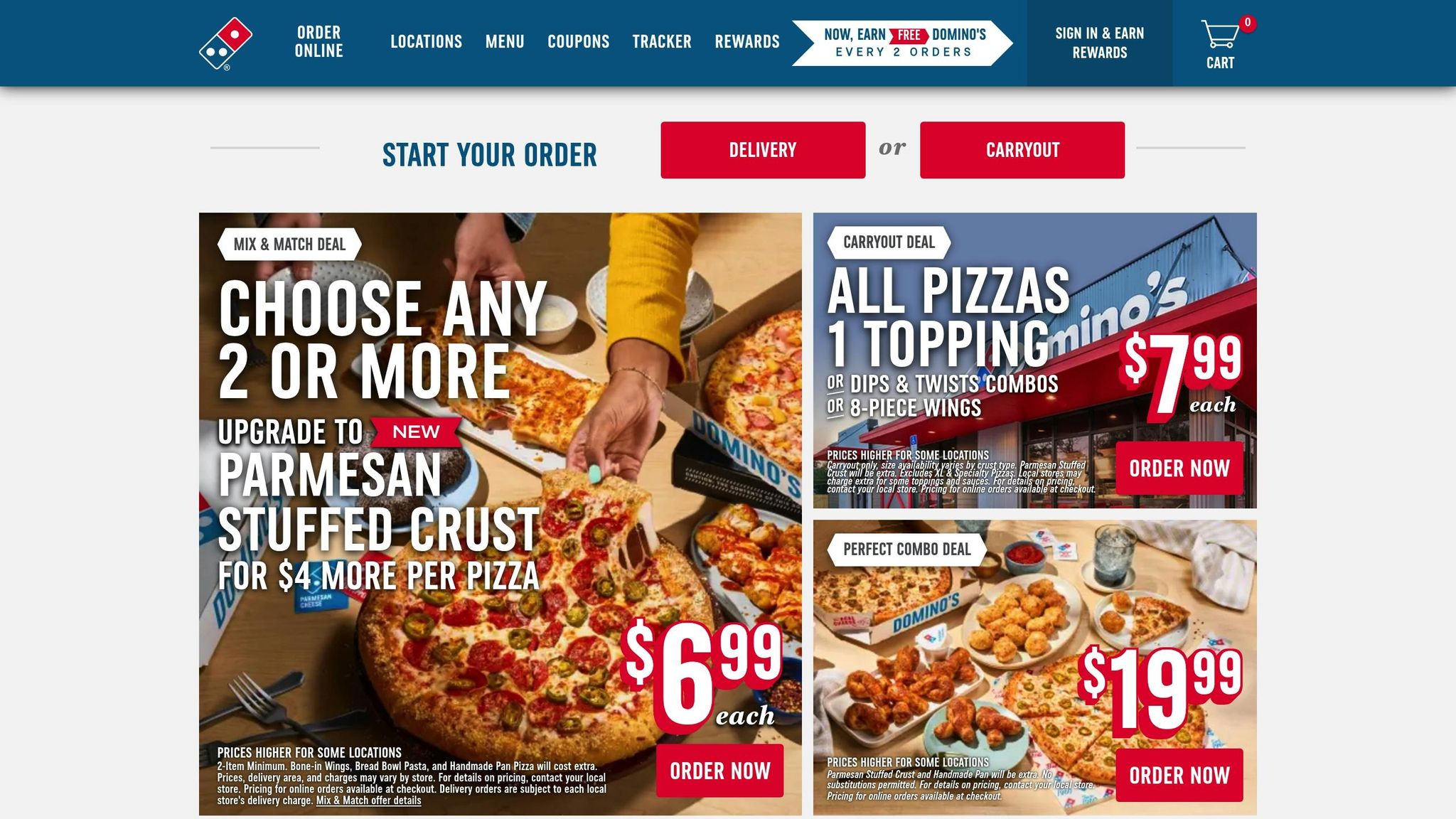
Back in 2009, Domino’s found itself in a tough spot. Same-store sales were plummeting, and the brand’s reputation was taking a hit. Instead of shying away from the criticism, Domino’s leaned into it with a daring campaign called the "Pizza Turnaround." The tagline said it all: "We’re Sorry for Sucking".
Key Strategies: Owning Up and Engaging Customers
Domino’s took an approach that was as bold as it was refreshing – total transparency. The company openly admitted its flaws, turning negative customer feedback into a stepping stone for change. To prove their commitment, they showcased both glowing and harsh customer tweets on a dedicated microsite.
They didn’t stop there. Domino’s pulled back the curtain on their advertising practices, revealing how pizzas were styled for commercials and promising to ditch misleading photography. They even created documentary-style videos to share the journey of revamping their recipes.
A key figure in this transformation was then-CEO Patrick Doyle. His candid and relatable communication style gave the campaign a human touch. Domino’s also actively sought customer input, using it to guide recipe tweaks and service upgrades. This combination of honesty and action helped the brand rebuild trust and set the stage for a major turnaround.
Results: A Financial and Brand Revival
The results of this transparency-first strategy were game-changing. By the first quarter of 2010, U.S. same-store sales jumped by 14.3%, with revenue hitting $381.1 million – an 18.4% increase compared to the previous year. Over the next decade, Domino’s stock skyrocketed by over 6,000%. In 2011 alone, the company saw its stock value climb by 75%, a clear sign of renewed investor confidence.
This transformation wasn’t just about numbers – it redefined how Domino’s connected with customers. Today, 85% of their sales come from online orders. Former CEO Patrick Doyle even described Domino’s as "a tech company that sells pizza".
"Domino’s succeeded not just because they were honest – but because their honesty was paired with bold action."
- Dr. David Meerman Scott, Communications Strategist
Lessons for Startups: Turning Criticism into Opportunity
Domino’s journey offers some valuable takeaways for startups or businesses looking to rebuild their reputation:
- See flaws as opportunities. Domino’s didn’t hide from criticism. Instead, they used it as a foundation for growth, proving how owning up to mistakes can strengthen credibility.
- Engage customers and show them they matter. By making their feedback process public, Domino’s turned customers into partners in their transformation.
- Pair honesty with action. Transparency alone isn’t enough. Domino’s backed it up with a new recipe, improved services, and tools like their pizza tracker.
- Lead from the top. Patrick Doyle’s visible involvement gave the campaign authenticity. For startups, having leadership personally drive change can make all the difference.
Domino’s story shows that when honesty is paired with meaningful action, even a struggling brand can achieve a remarkable turnaround. It’s a powerful reminder that rebuilding trust isn’t just about saying the right things – it’s about doing them.
Case Study 2: Dove – Changing Beauty Standards
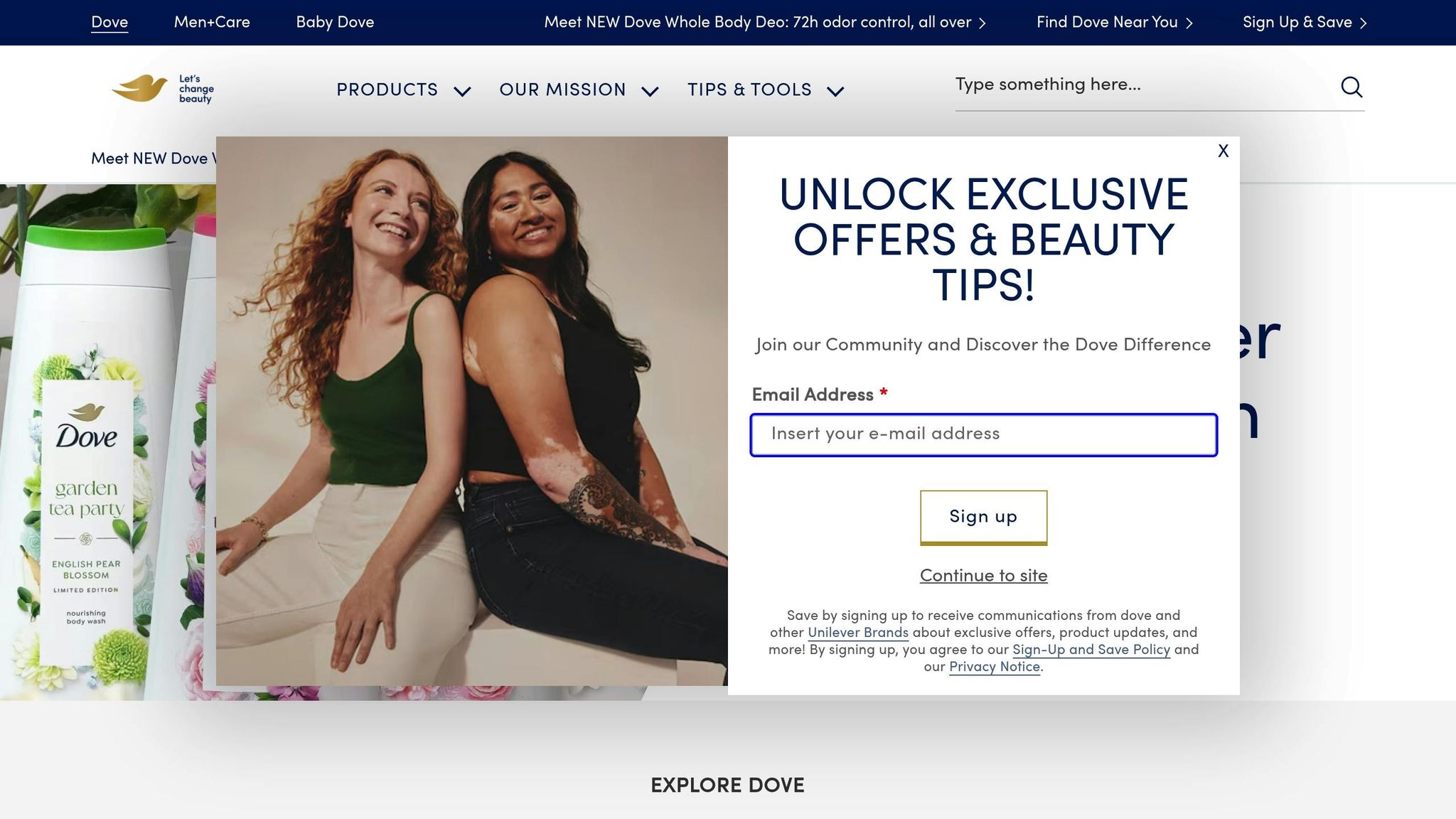
In the early 2000s, Dove found itself at a crossroads. Despite dominating the body soap market, sales had leveled off. The brand needed a fresh approach to resonate with women on a deeper level.
At the time, beauty advertising largely celebrated a narrow, unrealistic ideal of thinness, alienating the majority of women. In 2004, only 2% of women worldwide considered themselves beautiful. Meanwhile, research revealed that 75% of women wished for a broader definition of beauty, and 65% felt disconnected from typical beauty ads.
"When I was 11 years old, I’d pray extra hard that when I woke up in the morning I’d look like Barbie. Every morning I was disappointed." – Jess Weiner
This disconnect between beauty ideals and real women’s experiences laid the groundwork for a bold shift.
Key Strategies: A New Vision of Beauty
Dove took a revolutionary step by rethinking its advertising approach. The brand launched the Campaign for Real Beauty, which broke away from the industry’s narrow standards. Instead of promoting unattainable ideals, Dove celebrated diversity by featuring real women of different ages, sizes, and ethnicities. This shift directly challenged the traditional messaging that had long preyed on women’s insecurities.
Results: A Resounding Success
The results were nothing short of transformative. In some markets, Dove saw sales climb by an astonishing 700%, proving the strength of messaging that resonates on an emotional level. The Campaign for Real Beauty became a global phenomenon, generating billions of media impressions and significantly increasing brand recognition. Women felt seen and valued, leading to stronger customer loyalty and deeper connections with the brand.
Lessons for Founders: Evolving with Consumer Values
Dove’s journey offers valuable lessons for businesses aiming to reposition their brands:
- Challenge outdated industry norms. Media critic Emily Nussbaum once remarked, "Being thin means control and, symbolically, that you are rich, that you are young, that you are beautiful, that you are powerful". By questioning these entrenched ideas, Dove demonstrated the power of rewriting the narrative.
- Embrace authenticity to meet unmet needs. By showcasing real women and rejecting the traditional "male gaze", Dove bridged the gap between what the industry offered and what customers truly wanted, creating a competitive edge through relatability.
When brands align with evolving consumer values, they not only redefine industry standards but also build lasting emotional connections with their audience.
Case Study 3: Starbucks – Creating the Third Place
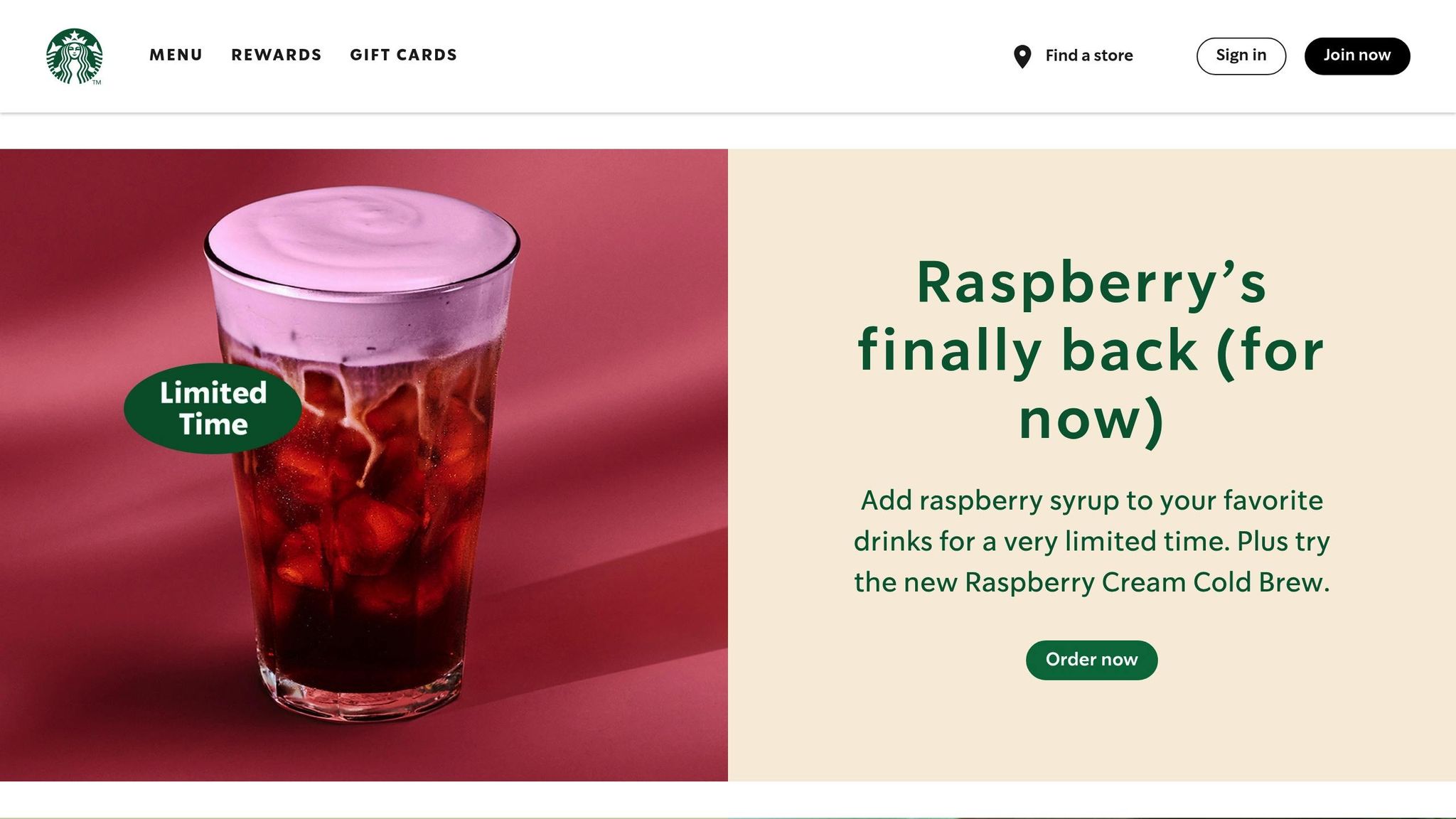
Back in the 1980s, Starbucks was just another coffee chain, competing on quality and price. But founder Howard Schultz had a bigger dream – one inspired by his visit to Italian espresso bars. He envisioned Starbucks as more than just a coffee shop. It could become a "third place", a space between home and work where people could connect, unwind, and feel like they truly belonged.
Schultz realized that Americans were missing the kind of community gathering spots that were common in Europe. By repositioning Starbucks as a lifestyle brand centered on experience and connection, he redefined what a coffee shop could be.
"At home, you’re part of a family. At work you’re part of a company. And somewhere in between there’s a place where you can sit back and be yourself. That’s what a Starbucks store is to many of its customers – a kind of ‘third place’ where they can escape, reflect, read, chat or listen."
- Howard Schultz, Former CEO of Starbucks
Key Strategies: Experience and Community at the Core
Starbucks didn’t just sell coffee; it sold an experience. The company poured resources into creating spaces that felt inviting and personal. Stores were designed with cozy seating, warm lighting, and layouts that worked for both quiet moments and social gatherings. The goal was simple: make every visit feel special.
To deepen the connection, Starbucks invested $500 million in the "Green Apron Service", a program aimed at improving barista training. This wasn’t just about making better lattes – it was about turning every customer interaction into a meaningful exchange.
Their commitment to community went beyond the walls of their stores. For example:
- In Turkey, Starbucks provided a $135,000 grant to support local education initiatives.
- In the UK, the company trained 11,000 baristas in British Sign Language, making stores more inclusive.
These efforts underscored a larger mission: to build relationships and foster a sense of belonging wherever they operated.
Results: Growth Fueled by Loyalty and Connection
The "third place" concept wasn’t just a good idea – it transformed Starbucks into a global powerhouse. Today, the company operates in over 40,000 locations worldwide.
This strategy also created fiercely loyal customers. The Starbucks Rewards program now drives 57% of U.S. revenue, with 34.6 million active app users who spend three times more than non-members.
Even as times changed, Starbucks adapted. When mobile orders surged to 31% of transactions, the company recognized the risk of losing the personal touch. They began shifting away from mobile-only store concepts, emphasizing the importance of balancing technology with human interaction.
Lessons for Businesses: Emotional Connections Matter
Starbucks’ story is a masterclass in building a brand around emotional connections. It shows the power of addressing unmet human needs and creating spaces where people feel valued. For any business, the takeaway is clear: memorable experiences matter. Empower your team to deliver them.
Another key lesson? Understand and adapt to local needs. Starbucks’ initiatives in Turkey and the UK highlight the importance of tailoring efforts to resonate with different communities.
"Great coffee and our stores will always be catalysts for community. Now more than ever the world needs places to come together with compassion and with love. Providing the world with a warm and welcoming third place may just be our most important role and responsibility, today and always."
- Howard Schultz, Former CEO of Starbucks
sbb-itb-32a2de3
Case Study 4: Spotify – Evolution to Multimedia Platform
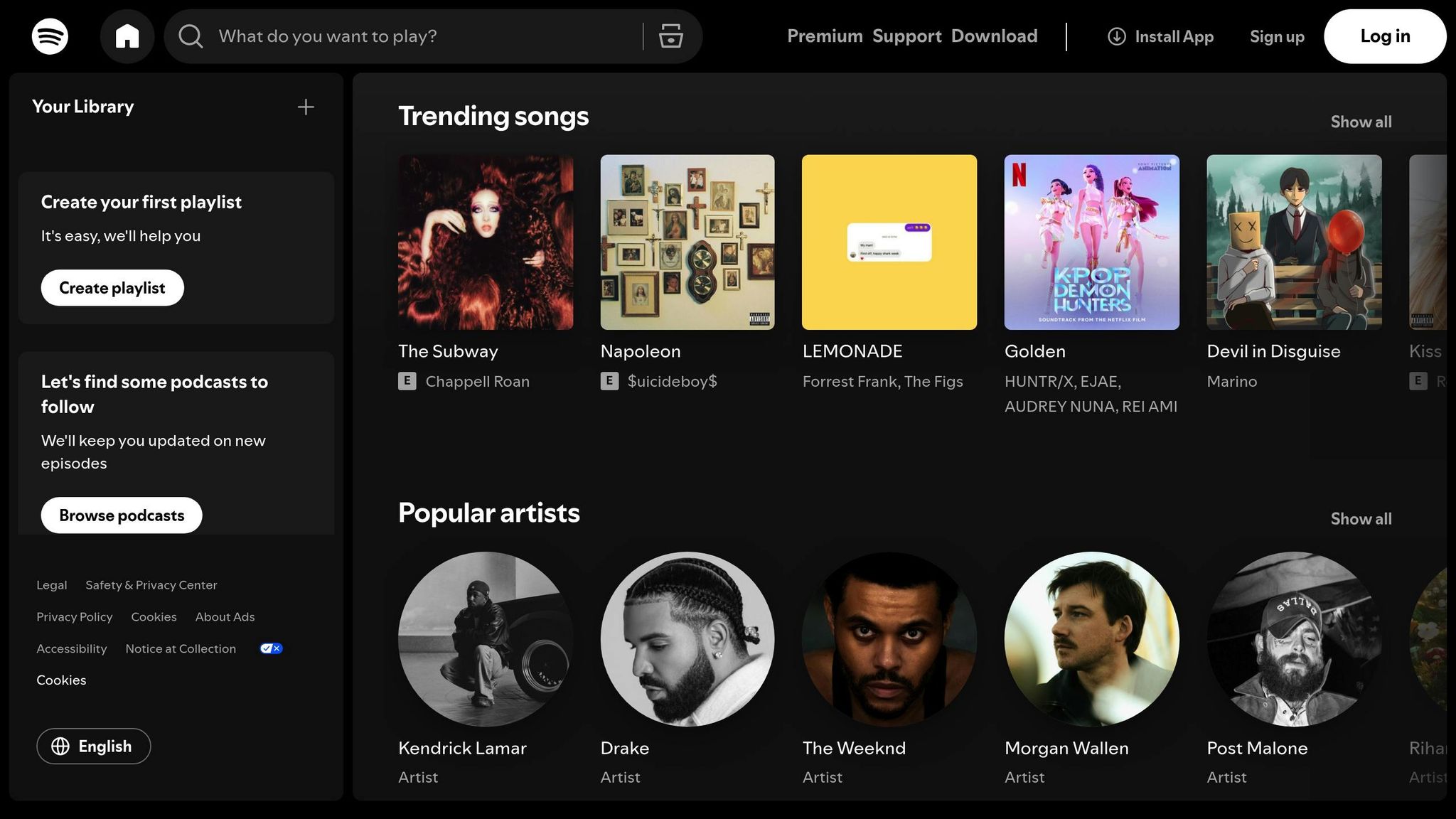
Let’s take a closer look at how Spotify transformed itself from a music streaming service into a leading multimedia platform, redefining its place in the market.
When Spotify first launched in 2008, it was all about music, competing with platforms like iTunes. But by the late 2010s, CEO Daniel Ek saw a bigger picture. Spotify set its sights on becoming the go-to destination for all things audio – whether that’s music, podcasts, audiobooks, or even video content. This wasn’t just about adding a few features; it was a complete shift in identity. And it worked. Spotify now leads the streaming market with 615 million monthly active users and a 30% market share, which is double that of its nearest competitor.
Key Strategies: Expanding Offerings and Personalization
Spotify didn’t rush this transformation – it took deliberate steps over time. Podcasts were introduced in 2019, followed by video content, audiobooks, and live programming in subsequent years. The company poured over $1 billion into its podcast strategy, including acquiring Gimlet Media for $230 million and The Ringer network. These investments helped grow its podcast library from fewer than 500,000 shows to over 4 million.
Video became another major focus. Today, Spotify hosts more than 250,000 video podcasts, with 170 million users actively watching them. Impressively, over 70% of viewers keep these videos in the foreground, showing a high level of engagement. By integrating all these features into a single app – starting with podcasts in 2019 and culminating with audiobooks in 2022 – Spotify ensured it could immediately tap into its massive user base.
Personalization has been a game-changer. Spotify’s recommendation engine, originally built for music, now helps users discover podcasts, audiobooks, and more. Data shows that users who engage with both music and podcasts use the platform twice as often.
"Investments in this space allow for the personalization engine to get better and better as new formats are added, ultimately giving us a better understanding of every user and how we recommend to them. To a large extent, the value of a service like Spotify is directly related to how much a consumer feels like that service helps them discover new things."
- Gustav Söderström, Spotify’s Chief R&D Officer
Results: Market Leadership and User Engagement
These bold moves paid off. By 2024, Spotify had achieved a net profit of over $1.18 billion and expanded to 263 million paying subscribers. The platform reported $1 billion in gross profit in Q1 2024 alone. Its 46% conversion rate from free to paid subscriptions far outpaces competitors like Apple Music (30%), Amazon Music (25%), and YouTube Music (15%), and it boasts a 75% retention rate.
Spotify’s discovery engine also delivered impressive results. Monthly artist discoveries grew from 10 billion in 2018 to 22 billion today. Artists like Billie Eilish owe early success to Spotify’s recommendation system, with her hit "Ocean Eyes" gaining traction through curated playlists.
Beyond music, Spotify has left its mark on the broader audio industry, contributing $10 billion to the music market in 2024. Gen Z alone streamed 1.2 trillion songs on the platform in 2023. The company is also experimenting with cutting-edge features, such as an AI DJ that curates music with spoken commentary, offering users a more interactive listening experience.
Lessons for Startups: Building for Growth
Spotify’s journey holds valuable lessons for startups. One of the biggest takeaways? Build with the future in mind. From the beginning, Spotify’s platform architecture allowed for seamless integration of new content types, saving them from the headache of creating separate apps later on.
Personalization is another key. Spotify’s ability to adapt its recommendation engine to various content types created a more engaging user experience, boosting retention and user activity across the board.
Big investments often take time to pay off. Spotify spent over $1 billion on podcasts, yet the division generated just $215 million in revenue in 2021. Still, the long-term benefits – like higher engagement and retention – justified the initial costs.
Finally, simplicity matters. By unifying all content types within a single app, Spotify avoided fragmentation and kept its user experience straightforward. Timing also played a role; Spotify introduced features gradually, ensuring users weren’t overwhelmed.
"We see the opportunity to continue to imagine and explore new verticals across our platform – within audio, but also beyond. And for each vertical, we will develop a unique set of software, services, and products and business models that’s going to be tailored for that specific ecosystem."
- Daniel Ek, Spotify CEO
For startups, the message is clear: think big, but plan carefully. Spotify’s transformation shows how a bold, user-driven strategy can turn a niche platform into an industry leader.
Case Study 5: Old Spice – Reviving a Legacy Brand
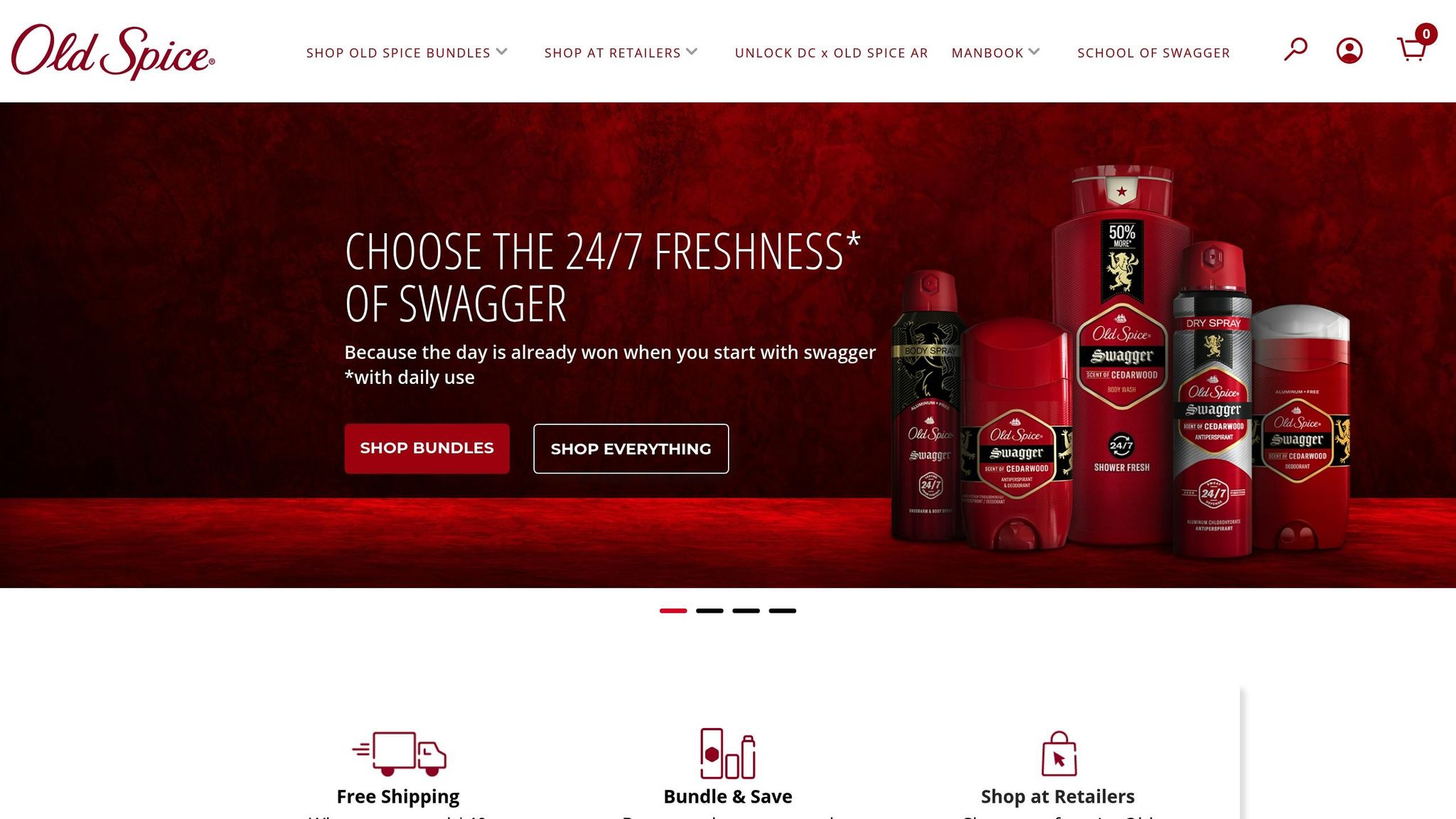
Old Spice’s transformation is a masterclass in how a legacy brand can completely reinvent itself and achieve massive growth. By 2010, the brand was struggling, viewed as outdated, and facing declining sales. But instead of fading into obscurity, Old Spice took bold steps to redefine its image and reclaim its place as a market leader.
Teaming up with Wieden+Kennedy, Old Spice launched the now-iconic "The Man Your Man Could Smell Like" campaign, starring Isaiah Mustafa. This campaign used surreal humor, rapid-fire transitions, and self-aware satire to breathe new life into the brand.
Key Strategies: Bold Marketing and Humor
Old Spice’s reinvention relied on several daring strategies:
- Targeting Women as Key Buyers
The campaign acknowledged that women are often the ones purchasing body wash for their households, even for men. By starting with the line "Hello ladies", the campaign cleverly appealed to this audience while still resonating with male consumers. - Interactive Digital-First Approach
Old Spice prioritized digital platforms, creating content designed to go viral. A standout example was Isaiah Mustafa recording 186 personalized video responses in just two and a half days, directly engaging with fans and amplifying the campaign’s reach. - Embracing Humor and Satire
Instead of running from its dated reputation, Old Spice leaned into it with bold, self-aware humor. This approach flipped consumer perceptions, turning a perceived weakness into a strength.
"Legacy Reinvention Through Humor: Old Spice used bold, self-aware satire to transform its outdated image." – Science of Retail
Results: Market Share and Revenue Growth
The results of Old Spice’s campaign were nothing short of extraordinary:
- Digital Engagement
The campaign racked up over 40 million YouTube views in its first week and generated 1.4 billion digital impressions. Twitter followers soared by 2,700%, Facebook interactions increased by 800%, and website traffic jumped 300%. - Sales Surge
Body wash sales skyrocketed by 107% in just one month after the campaign launched. By May 2010, sales for Old Spice Red Zone Body Wash had climbed 60%, doubling by July. Overall, sales shot up 125% year-over-year within months. - Market Leadership
Old Spice reclaimed its position as the top brand in the U.S. men’s body wash category. Its market share doubled from 3% to 6%, and total sales revenue grew from $280 million in 2009 to over $1 billion by 2017.
"The campaign’s success translated into a significant increase in sales and market share for Old Spice. In the year following the launch of the Old Spice Guy campaign, the brand’s sales reportedly doubled, and Old Spice became the market leader in the U.S. men’s body wash category."
Lessons for Entrepreneurs: Bold Ideas to Disrupt Markets
Old Spice’s success highlights valuable lessons for entrepreneurs looking to shake up their industries:
- Challenge Assumptions About Your Audience
Focus on the real decision-makers in your market, not just the end users. Tailor your messaging to influence those who hold purchasing power. - Turn Weaknesses Into Strengths
Use humor or creativity to reframe negative perceptions and make them work in your favor. - Engage in Real-Time
Personalized, real-time interactions strengthen customer relationships and keep the buzz alive long after a campaign’s initial launch. - Create Content That’s Shareable
Design campaigns with viral potential to ensure your message spreads far and wide. - Build a Memorable Brand Personality
A distinctive voice and personality can help overcome past stigma and leave a lasting impression on consumers.
"Bold Ideas Can Transform Brands – Taking calculated risks and challenging industry norms can redefine consumer perception. This allows legacy brands to remain competitive." – Science of Retail
Old Spice’s journey proves that even brands with decades of history can reinvent themselves with the right mix of creativity, strategy, and engagement. By embracing bold ideas and connecting authentically with their audience, they turned a struggling legacy into a thriving, modern brand.
Key Lessons from These Brand Repositioning Case Studies
The transformations highlighted in these case studies reveal patterns that any business can learn from. While each company faced its own unique challenges, certain strategies consistently set successful repositioning efforts apart from those that miss the mark.
Transparency earns trust. Domino’s Pizza proved that being upfront about shortcomings can rebuild consumer confidence. Their "Pizza Turnaround" campaign openly addressed customer dissatisfaction and made transparency the heart of their brand story. This approach wasn’t just bold – it was backed by data, with 78% of successful repositioning strategies combining data insights with emotional storytelling. Tackling real issues, rather than making surface-level tweaks, can boost sales by as much as 30%. It’s all about redefining value through a deep understanding of the market.
Emotional ties create lasting loyalty. Brands that connect with customers on an emotional level see real rewards. Emotionally connected customers deliver a 306% higher lifetime value. In Brazil, for instance, 61% of consumers prioritize emotional resonance over price when choosing a brand. This highlights how powerful emotional connections can be in driving long-term relationships.
Adaptability sets leaders apart. Spotify’s evolution from a music streaming service to a multimedia platform and Old Spice’s pivot to a younger audience are prime examples of staying relevant by adapting to shifting market dynamics. Ignoring early warning signs – like declining market share – can lead to trouble, with 40% of companies experiencing sales drops within a year if they fail to act. With consumer preferences shifting dramatically every five years, brands that evolve are better positioned to thrive. In fact, 60% of successful repositioning efforts result in expanded reach.
Consistency across all touchpoints is critical. Every successful case study emphasized the importance of executing a repositioning strategy consistently across all customer interactions. Research shows that 70% of consumers value brands that stay true to their core values, even as they evolve. Success lies in finding the balance between innovation and authenticity – staying rooted in what makes a brand unique while presenting it in a way that feels fresh and relevant.
Personalization powered by data drives engagement. The most effective repositioning efforts combine emotional storytelling with data-driven personalization. Old Spice’s bold and humorous campaigns and Spotify’s curated playlists are great examples of using insights to create meaningful, personal connections at scale. These strategies show how data can amplify engagement when it’s used to craft experiences that resonate with individual customers.
For businesses planning their own repositioning, these lessons offer actionable strategies. Start with comprehensive market research to understand how your brand is currently perceived and what position you want to achieve. It’s worth noting that 65% of consumers are more likely to support brands that realign their purpose to reflect evolving values – provided the change feels genuine, not opportunistic.
At M Accelerator, we’ve seen these principles in action through our work with over 500 founders. Our framework bridges the gap between strategy and execution, ensuring every aspect of a brand’s transformation aligns seamlessly. Success in repositioning isn’t just about bold ideas – it’s about measurable results. For instance, achieving a customer retention rate above 85% often reflects strong alignment with market expectations.
Whether you’re a startup carving out your niche or an established business ready to evolve, these case studies show that honest, bold, and emotionally engaging repositioning can deliver real growth. The key? Commit fully to the process and ensure consistency across every part of your brand experience. These lessons don’t just summarize past successes – they offer a roadmap for future strategies, no matter the size or stage of your business.
Conclusion: Using Brand Repositioning for Long-Term Growth
Brand repositioning isn’t just a decision – it’s a turning point that can determine whether your business thrives or struggles to stay relevant. The examples we’ve discussed, from Domino’s Pizza’s transparency overhaul to Old Spice’s bold reinvention, highlight how well-executed repositioning can create lasting advantages in competitive markets.
Timing and strategy play a central role in this process. Staying attuned to your market position and acting before changes become unavoidable is crucial. Proactive market research not only reveals where your brand currently stands but also uncovers where your audience wants it to go. Waiting too long to adapt can leave you playing catch-up.
Effective repositioning digs deep into core challenges, replaces outdated messaging, and builds trust through clear, honest commitments. Take McDonald’s modernization efforts or the American Red Cross’s urgency-driven campaigns – both demonstrate how addressing real issues and aligning with customer expectations can transform perceptions.
Consistency is another must-have. Every customer interaction should reflect your repositioned brand. This isn’t a quick fix; it’s a gradual process that requires time and dedication to shift market perceptions. A cohesive, long-term approach ensures customers see and feel the change at every touchpoint.
Transparency is a powerful tool here. With 94% of consumers expressing loyalty to brands that communicate openly, honesty isn’t just a nice-to-have – it’s a business advantage. Brands that align their messaging with customer needs and maintain clear communication set the stage for sustainable growth.
At M Accelerator, we’ve worked with over 500 founders to navigate these transformations. Our approach bridges vision and execution, ensuring that repositioning strategies don’t get stuck in the planning phase. Whether you’re a startup carving out your niche or an established brand ready to evolve, aligning your strategy with market realities is key.
Ultimately, successful repositioning requires more than surface-level adjustments. It demands a willingness to challenge long-held assumptions and fully commit to reshaping how customers see your brand. Companies that embrace meaningful change, rather than cosmetic tweaks, are the ones that shift perceptions and gain a competitive edge.
Your brand’s ability to adapt will determine its future. The case studies we’ve explored offer valuable lessons, but your path will be uniquely your own. Approach the process with honesty, commit to real change, and ensure every aspect of your business reflects your new direction. Brands that master this process don’t just adapt to market changes – they lead them.
FAQs
How can a brand decide if repositioning is the right move for growth?
If a brand’s identity feels out of sync with market trends but its core values and offerings are still solid, it might be time to think about repositioning. Start by digging into customer feedback, analyzing market research, and keeping an eye on industry changes. These steps can help pinpoint new opportunities to connect with different segments or demographics.
Repositioning can be a smart move when the aim is to update the brand’s image, reach a wider audience, or better showcase its value. Setting clear goals – like breaking into new markets or reshaping public perception – is key to making sure the effort leads to real, impactful results.
What challenges do brands face when repositioning, and how can they address them effectively?
Brands often encounter tough obstacles when attempting to reposition themselves. One major issue is the risk of confusing or even alienating loyal customers. Abrupt shifts can shake the foundation of brand equity if customer perceptions aren’t handled with care. Another tricky part? Finding the sweet spot between keeping current customers happy and pulling in new ones. This balancing act demands careful audience segmentation and well-thought-out messaging.
To tackle these challenges, brands should start with thorough market research to get a clear picture of customer needs and opinions. Communicating the new brand direction clearly and consistently is key to preventing misunderstandings. On top of that, customized messaging for different audience groups can help ensure long-time customers feel appreciated, while new ones are drawn in effectively.
Why is building an emotional connection important in brand repositioning, and how can businesses achieve it effectively?
Building an emotional connection plays a key role in brand repositioning. It lays the groundwork for loyalty, trust, and a stronger sense of engagement with your audience. When people feel seen, understood, and valued, they’re far more likely to form a personal connection with your brand. This connection can help your business stand out in a crowded market and build lasting relationships with customers.
Here’s how businesses can nurture these connections:
- Align your brand’s values with what your customers believe in. This creates a sense of authenticity that resonates deeply.
- Design experiences that evoke emotion. Whether it’s through storytelling or personalized touches, these moments can leave a lasting impression.
- Use branding, visuals, and messaging to reflect your audience’s aspirations and struggles. Speak their language and show you understand their journey.
Focusing on emotional connections doesn’t just help with repositioning – it makes your brand unforgettable and indispensable to your customers.